Ted Lipien
The proposal to build 112 new multimillion-dollar luxury homes in a likely gated community at the top of the ridgeline of Lake Tahoe, one of the most iconic scenic places in North America, was clearly horrifying to dozens of Tahoe basin and other local residents who came to a meeting in Truckee, California to discuss strategies for opposing the proposed development by East West Partners. Participants in Tuesday’s (Dec. 9, 2014) meeting were both angry and ready to fight for protecting Lake Tahoe’s skyline.
Ann Nichols who spoke on behalf of North Tahoe Preservation Alliance said that the ridgelines of Lake Tahoe and Martis Valley are one of the most outstandingly beautiful features of America and a basis for the area’s popularity and economy. Representatives of other local environmental organizations also expressed concerns about depletion of water sources on the Brockway Mountain. This could lead to an even greater reliance for water on Lake Tahoe, which is already shrinking from the effects of California drought. Ann Nichols said that most towns that have any kind of scenic value protect their ridgelines, including Sun Vally, Park City, Salt Lake City, Aspen, Sonoma and many others. According to Bob Lyman, Agate Bay Water, “half of the water for Carnelian Woods comes from Carnelian Creek and underground springs.” The headwaters for these sources are on the affected ridge line. “Development on the ridge would impair the quality of the water,” Lyman said.
It was clear from comments at the meeting that many local Tahoe area residents have absolutely no faith in the Placer County Supervisors and the Tahoe Regional Planning Agency (TRPA) to enforce zoning limitations and adequate ridgeline controls. Some said, however, that their local representative as Placer County Supervisor, Jennifer Montgomery, appears to share public concerns about the project and its negative impact on the environment.
Several local residents said that Placer County officials and TRPA have extremely strong pro-growth agenda and show little concern for the environment and preserving the area for responsible geotourism. Many residents, including lawyers and other professionals, expressed fears in the developers’ ability to pay their way through any environmental and zoning reviews and get the results they want. The conclusion was that without strong public outcry at the state and national level and without local, state and national media attention, the developers may get what they want from local officials and use this project as a model for developing other iconic scenic areas in California.
Ann Nichols and others also expressed disappointment in two local environmental groups, Sierra Watch and Mountain Area Preservation (MAP), for signing a cooperative conservation and development plan with the developers to gain environmental concessions, which they said were minimal compared to the damage the developers plan to inflict on the environment of Lake Tahoe. They said privately that these two otherwise excellent organization have been effectively silenced by the agreement and were not told about the Tahoe Basin portion of the development.
According to local media reports, when Sierra Watch and MAP signed on to the original Martis Valley Opportunity Agreement in 2013, the developers’ TRPA application for development in the Lake Tahoe Basin was not part of it. Several local environmental activists were supportive of the original agreement between the developers and environmental groups but they are strongly opposed to East West Partners including Lake Tahoe ridgeline in their new development proposal.
Conservation groups opposing the the ridgeline development in the Tahoe Basin include Friends of the West Shore and the Tahoe Area Sierra Club. The forestland is privately owned by Sierra Pacific Industries, a logging company, which is working with East West Partners. The land in question is currently zoned for forest and conservation, but Placer County and the TRPA can change it to residential/multi-family zoning. Many of the participants in Tuesday’s meeting in Truckee demanded that Placer County and TRPA develop clear and strict standards for protecting the ridgelines, but they also expressed strong doubts that these government entities can be trusted not to be swayed by the developers.
Opponents of the project said that they were holding their meeting in Truckee because Truckee residents will also see negative environment impact of the proposed development. The meeting was being held at the Truckee Tahoe Airport which receives a public subsidy of more than $4 million annually from property tax revenues and makes meeting facilities available to local nonprofits.
The airport itself has been linked to the overdevelopment controversy. Other than serving locally-based pilots, it also serves a small portion of the largely transient population that is responsible for new developments of luxury homes and uses the airport for jet travel. Truckee residents have already experienced a heavy growth of private jet traffic and plane noise over the summer months (2014) and more growth in private jet travel is expected, which could make quiet use of homes and outdoors by Truckee residents difficult if not impossible, especially in peak summer and winter months.
The proposed development of luxury residences is likely to further increase jet traffic over Lake Tahoe, Martis Valley, Truckee and even over the lake’s ridgeline where the developers hope to sell these multi-million dollar homes to individuals who can afford private jet travel to a mountain resort community without showing much concern what it does to the quality of life of local residents and the environment. But the trend among most local elected officials is to support growth.
Most of the voter-elected Truckee Tahoe Airport District Board of Directors members, with the notable exception of Mary Hetherington who speaks out for local residents but is almost always outvoted, favor growth. They are proposing to build more jet hangars to accommodate growing jet traffic in what they say is an appropriate response to local development. But some Airport Board members are also concerned that at least in this case, future affluent home-owners on the Lake Tahoe ridgeline might complain about jet noise when they are not themselves flying.
The East West Partners projects will no doubt benefit the local construction industry, but as Ann Nichols of North Tahoe Preservation Alliance warned, “it will increase the population by 2,000, vehicle trips by 3,434/day,[result in] years of construction impacts, move 1 million cubic yards of dirt and cut down 200 acres of trees.” “This will be intense,” she said. East West Partners say that any environmental impact will be minimal.
With some of the Town of Truckee officials linked with the development sector of the local economy, the town’s government likewise shows strong pro-growth agenda and little concern for the environment or a desire to promote responsible tourism.
Local residents hope that growing public interest and involvement can perhaps change attitudes of some government officials although many were not sure. Local media has started to pay attention. “Paving paradise, one ridgeline at a time,” an op-ed in Tahoe Daily Tribune observed. Another op-ed asked “What will all this development do to the health of Lake Tahoe?”
Local developers and other pro-growth entities use various tactics to counter and minimize opposition to their expansion, growth and development plans. Truckee Airport officials recently gave continuous donations to some of the local conservation groups based directly on the amount of jet fuel sales at the airport. This will make it unlikely for these groups to oppose building of jet hangars and to speak out against jet noise and air pollution in Truckee and in the larger Truckee-Tahoe region. Developers insist that many people in local communities support these growth projects because they produce employment and other economic benefits. Truckee Airport officials claim that local residents are aware of increased private jet use forecasts and approve growth consistent with growing community transportation needs.
I have talked to many Truckee residents not connected with the airport and have not yet found a single one who agrees with that claim while many strongly complain about overdevelopment and jet noise. Without a vision for any other type of growth, such as geotourism, some local residents do rely on the boom and bust construction industry which has a strong political lobby and is able to elect and influence local government officials. Some of the meeting participants saw this as a big problem considering the abundance of financial resources and influence East West Partners have.
With none of the local governments in the area willing to develop a vision of eco-friendly travel, geotourism and sustainable development, participants in Tuesday’s meeting in Truckee discussed strategies for bringing public pressure on local officials and giving their fight more state-level and national-level attention. One of the discussed ideas was to place billboards along I-80 warning visitors to the area of the potential destruction of Lake Tahoe’s skyline. Billboards could also be posted near the Truckee Airport warning passengers of private jets and potential buyers of luxury homes of the threat to the environment. If enough local officials and potential buyers are shamed into not supporting the destruction of Lake Tahoe’s ridgeline and not flying private jet into an ecologically fragile area, the developers may conclude that the project will not be profitable.
Martis Valley West project meeting participants did discuss getting State of California agencies involved in the effort to protect Lake Tahoe’s skyline from development. The consensus seemed to be, however, that public opinion pressure has to be directed primarily at local elected officials and local government bodies while also looking for state-level and national support. The organizers have prepared two sample letters, one to TRPA and the other one to Placer County. The meeting lasted slightly less than two hours.
Community organizers want to let Placer County and the Tahoe Regional Planning Agency know that the citizens of Lake Tahoe “do NOT support the desecration of a forested ridgeline inside the basin.” There are two online petitions: “Remove Tahoe Basin portion of Martis Valley West project” and “Establish enforceable ridgeline protections in the Lake Tahoe area.” The first one has nearly 3,000 signatures.
East West Partners strongly deny that their project represents any kind of threat to the environment. On the contrary, they claim that the project and their agreement with two local environmental groups is a pro-environment project and that any negative impact will be mitigated. Some of these claims and counterclaims can be found on “Martis Valley West Project: Fact Check” site set up by opponents of the development project.
East West Partners and Sierra Pacific arguments in support of the project are presented on this “Martis Valley West Parcel Facts” site.
East West Partners say that their project’s impact on the night sky over Lake Tahoe is expected to be minimal. Local residents opposed to the project say that this claim is false and misleading.
“The current ridgeline is dark at night, and views from Lake Tahoe include shadowed ridgelines topped by starry skies. Adding homes to this ridgeline will add light – period. This will forever destroy the beautiful nighttime views of this currently undeveloped forest.”
Opponents of the project have posted online a photo what the current Lake Tahoe skyline looks like and what it may look like if the development project proceeds.
Ann Nichols said “our communities have the right to protect Lake Tahoe’s essential character.”
Why did you move here? Why did you visit here? Our ridgelines are irreplaceable, once they are gone, they’re gone. There is no undo button. Just say, “No” to new ridgeline development. Let’s keep Tahoe wild,” Ann Nichols said.
In addition to volunteering with North Tahoe Preservation Alliance, Ann Nichols works as a real estate agent and is based in Crystal Bay, Nevada.
This report and commentary was prepared by Ted Lipien. He is a resident of Truckee and an investigative reporter whose work has been noted by or appeared in Congressional Record, Washington Post, Washington Times, NPR, Fox News and many other U.S. media. He volunteers with Eco Truckee Tahoe as a reporter, writer, web designer, and photographer.


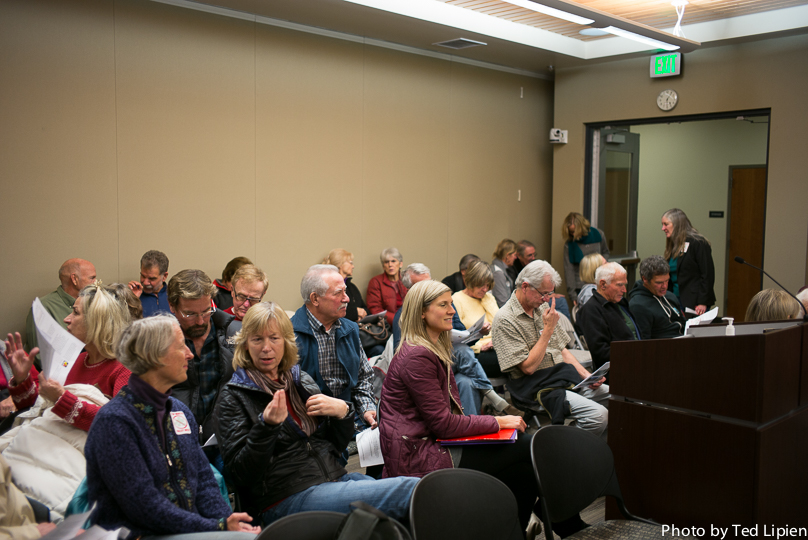
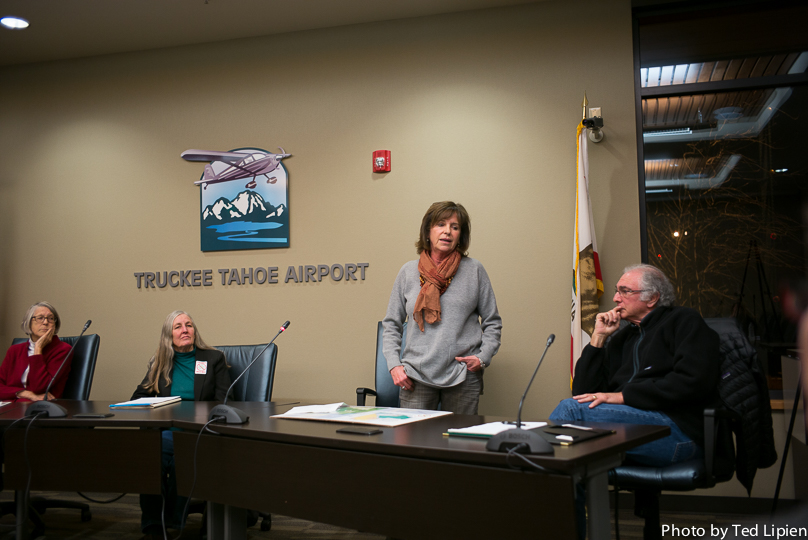


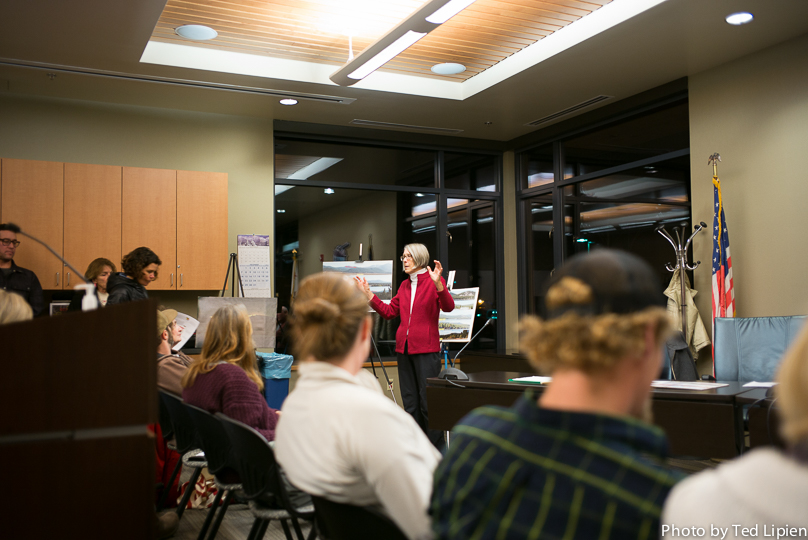
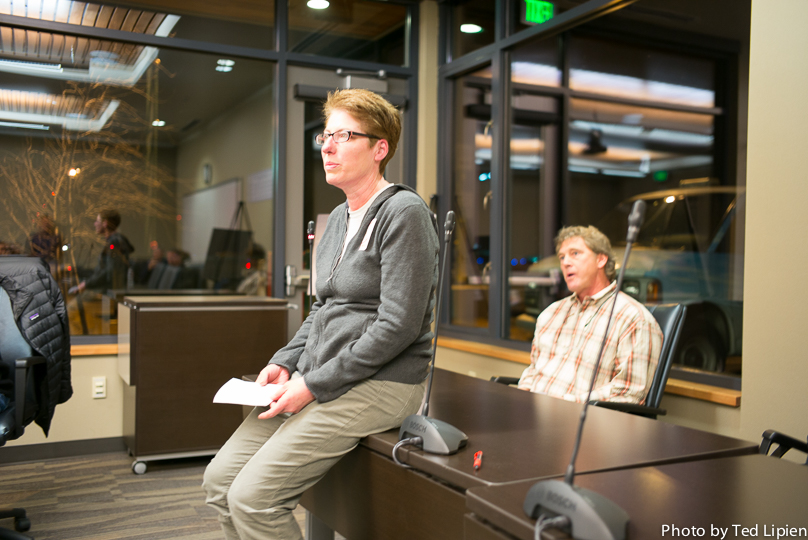
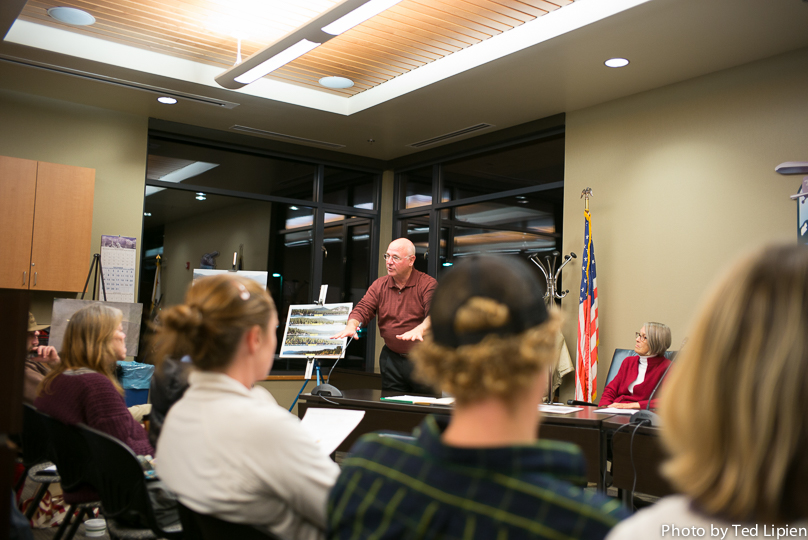

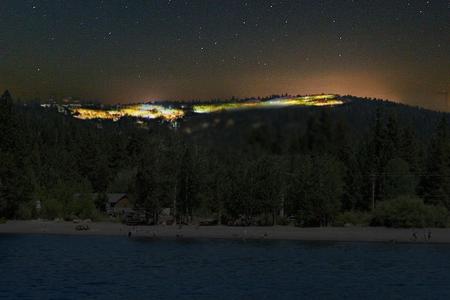
Leave a Reply